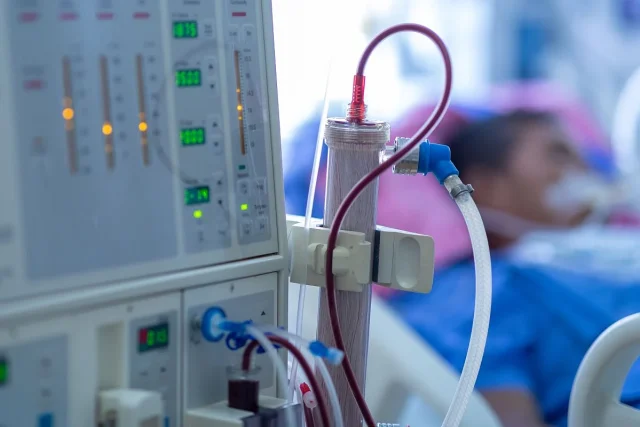Higher comorbidity index, greater number of nephrologist visits within past six months linked to higher risk for suboptimal dialysis initiation
By Elana Gotkine HealthDay Reporter
FRIDAY, July 25, 2025 (HealthDay News) — Suboptimal dialysis initiation, typically defined as dialysis initiation during a hospitalization and/or with a central venous catheter, is common among patients with advanced chronic kidney disease (CKD) followed in multidisciplinary clinics, according to a study published online July 21 in Kidney360.
Amber O. Molnar, M.D., from McMaster University in Hamilton, Ontario, Canada, and colleagues conducted a prospective cohort study to examine risk factors for suboptimal dialysis among patients with advanced CKD followed in multidisciplinary kidney clinics. Suboptimal dialysis initiation was the primary outcome, defined by dialysis initiation during a hospitalization or with a central venous catheter in patients younger than 75 years.
Overall, 366 patients were included, and of these patients, 33 percent had a suboptimal dialysis start (69 percent of dialysis starts) during a median follow-up of 1.9 years. The researchers found that the risk for suboptimal dialysis initiation was lower in association with higher hemoglobin (adjusted hazard ratio, 0.96). Mean hemoglobin was 10.7 g/dL among those with suboptimal dialysis initiation. A higher risk for suboptimal dialysis initiation was seen in association with a higher comorbidity index and greater number of nephrologist visits within the past six months (adjusted hazard ratios, 1.17 and 1.70, respectively). There were no associations seen for measures of health literacy, kidney disease knowledge, or influenza vaccination with suboptimal dialysis initiation.
“In conclusion, we did not find easily modifiable patient-related risk factors for suboptimal dialysis initiation,” the authors write. “The next best step is likely improved kidney failure risk prediction tools applicable to the advanced CKD population that use a timeline over which KRT (kidney replacement therapy) preparation typically occurs (i.e., 6-12 months) combined with starting KRT preparation sooner in high-risk patients.”
Copyright © 2025 HealthDay. All rights reserved.



















